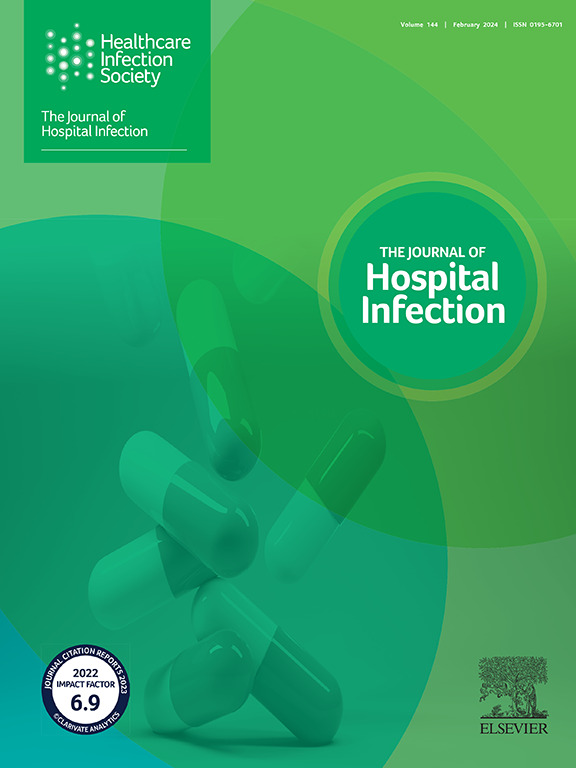Prescription of oral antibiotics and its appropriateness for outpatients in a tertiary care hospital in Korea
IF 3.9
3区 医学
Q1 INFECTIOUS DISEASES
引用次数: 0
Abstract
Objectives
Antimicrobial stewardship programmes (ASPs) have gained prominence, with increased awareness regarding the importance of appropriate antibiotic use. However, ASP implementation for outpatient antibiotic prescription is uncommon, particularly in South Korea. This study aimed to analyse the patterns and appropriateness of outpatient antibiotic prescription at a tertiary care hospital in Korea.
Methods
This study analysed the patterns of oral antibiotic prescription between 1st June 2018 and 31st May 2023 at the outpatient department of Seoul National University Bundang Hospital. The appropriateness of prescriptions issued between 15th and 19th May 2023 was assessed. The assessment criteria included: indication for antibiotic use; antibiotic choice; duration; and dose/frequency. Pharmacists and infectious diseases specialists performed evaluations.
Results
In total, 7,282,407 outpatient visits were recorded over the 5-year study period, and oral antibiotics were prescribed in 243,967 (3.4%) cases. The frequency of antibiotic prescription was highest in dentistry, dermatology and urology departments. The most commonly prescribed antibiotics were cephalosporins, penicillins and sulphonamides. Of the 423 prescriptions evaluated, 289 (68.3%) and 134 (31.7%) were for treatment and prophylaxis, respectively. Prescriptions were classified as inappropriate in 28.4% (82/289) and 70.9% (95/134) of treatment and prophylaxis cases, respectively. The primary reason for inappropriateness in both treatment and prophylaxis cases was inappropriate indication, accounting for 46.3% (38/82) of treatment prescriptions and 96.8% (92/95) of prophylaxis prescriptions.
Conclusions
Antibiotics were prescribed at 3.4% of all outpatient visits. The prescription was inappropriate in 28.4% of treatment cases and 70.9% of prophylactic cases. Proactive and expansive ASP activities by pharmacists should be considered in outpatient settings.
韩国一家三级医院门诊患者的口服抗生素处方及其适宜性。
目的:随着人们对合理使用抗生素的重要性认识的提高,抗菌药物管理计划(ASPs)的重要性日益突出。然而,在门诊抗生素处方中实施 ASP 的情况并不多见,尤其是在韩国。本研究旨在分析韩国一家三级医院门诊抗生素处方的模式和合理性:我们分析了 2018 年 6 月 1 日至 2023 年 5 月 31 日期间首尔国立大学盆唐医院门诊部口服抗生素处方的模式。对2023年5月15日至5月19日期间开具的处方进行了适宜性评估。评估标准包括:抗生素使用指征、抗生素选择、持续时间、剂量和频率。药剂师和传染病专家进行了评估:结果:5 年内共记录了 7,282,407 次门诊就诊。其中 243,967 人(3.4%)被处方口服抗生素。牙科、皮肤科和泌尿科处方抗生素的频率最高。最常处方的抗生素是头孢菌素类、青霉素类和磺胺类。在评估的 423 份处方中,289 份(68.3%)和 134 份(31.7%)分别用于治疗和预防。在治疗和预防处方中,分别有 28.4%(82/289)和 70.9%(95/134)的处方被发现不恰当。治疗和预防用药不足的主要原因是适应症不当,占治疗处方的 46.3%(38/82)和预防处方的 96.8%(92/95):结论:3.4%的门诊病人使用了抗生素,其中28.4%的治疗性抗生素和70.9%的预防性抗生素处方不当。药剂师应考虑在门诊环境中开展积极主动的 ASP 活动。
本文章由计算机程序翻译,如有差异,请以英文原文为准。
求助全文
约1分钟内获得全文
求助全文
来源期刊

Journal of Hospital Infection
医学-传染病学
CiteScore
12.70
自引率
5.80%
发文量
271
审稿时长
19 days
期刊介绍:
The Journal of Hospital Infection is the editorially independent scientific publication of the Healthcare Infection Society. The aim of the Journal is to publish high quality research and information relating to infection prevention and control that is relevant to an international audience.
The Journal welcomes submissions that relate to all aspects of infection prevention and control in healthcare settings. This includes submissions that:
provide new insight into the epidemiology, surveillance, or prevention and control of healthcare-associated infections and antimicrobial resistance in healthcare settings;
provide new insight into cleaning, disinfection and decontamination;
provide new insight into the design of healthcare premises;
describe novel aspects of outbreaks of infection;
throw light on techniques for effective antimicrobial stewardship;
describe novel techniques (laboratory-based or point of care) for the detection of infection or antimicrobial resistance in the healthcare setting, particularly if these can be used to facilitate infection prevention and control;
improve understanding of the motivations of safe healthcare behaviour, or describe techniques for achieving behavioural and cultural change;
improve understanding of the use of IT systems in infection surveillance and prevention and control.
 求助内容:
求助内容: 应助结果提醒方式:
应助结果提醒方式:


